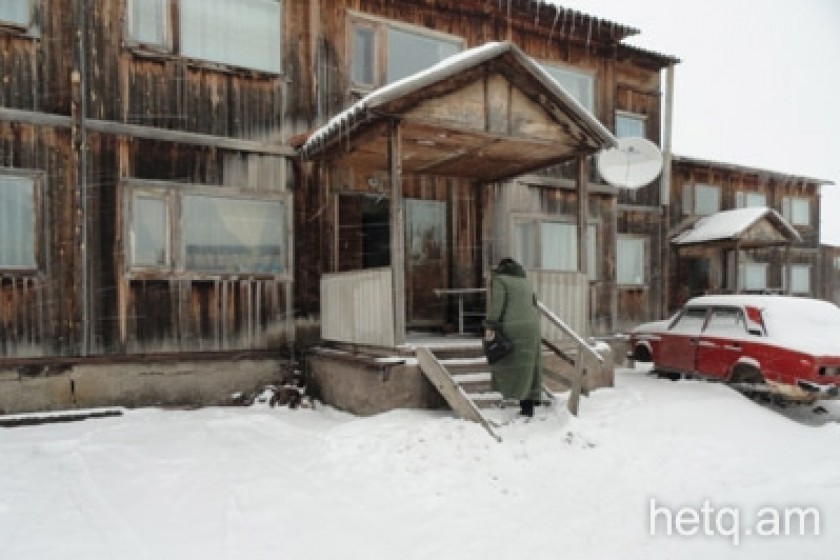
Ashotsk's Winters Make Life Harder Still for Those Lacking Adequate Housing
According to Ashotsk Mayor Artour Aloyan, the most pressing problem facing this rural Shirak community close to the Georgian border is the number of homeless families.
Some 800 of the community’s 2,987 residents are in need of adequate housing. Right now, these people live in two-storey wooden structures or in makeshift trailer homes.
As a result of the 1988 earthquake in the region, Ashotsk has an urgent need for 174 new homes. Buildings damaged by the earthquake are so far gone that they can’t be reinforced and renovated.
Resident Gohar Khachatryan says that many of the homes were torn down.
“We have been living in one of those wooden houses they gave us 24 years ago and promised all the displaced families a new home during the next twenty years. But we have remained here ever since and have no hope of ever getting out of this dilapidated place. There are no jobs to be had either, so we can’t move given the lack of personal resources.”
Mayor Aloyan says that residents of the wood structures signed documents years ago that changed the status of the buildings from temporary to permanent. He claims it was a move by the authorities to artificially resolve the housing problem plaguing the area.
Aloyan says that while the government periodically raises the housing issue, Ashotsk is never included in any of the regional development plans.
Ashotsk has self-generated revenues of 12.5 million AMD and receives another 27 million in state subsidies. The community makes up the remainder of its 41.7 million budget from the sale of communal properties.
50% of the budget is allocated to the cultural center, art school, kindergarten, library and upkeep of the municipal office.
Mayor Aloyan says the remainder of the budget goes to other community projects and points out that in the last four year development plan, 12 million was allocated for renovating the walls of the old and new cemeteries.
The International Fund for Agricultural Development (IFAD) financed a 145 million AMD gasification project for the village and the community kicked in 20 million of its own money.
Winter is a particularly rough time for those living in inadequate housing. Temps can drop to -36 centigrade and the frequent snowfalls can remain on the ground for 154 days.
Blizzard like conditions greeted us on the day we arrived. Bus shelters were not to be seen.
Passengers waiting in the cold for transportation to Gyumri asked us to relay their complaints to Mayor Aloyan. He promised to install at least two shelters under the upcoming 2013-2106 development plan.
While the community budget allocates funds to maintain the village kindergarten, it hasn’t been operating since 2009.
Armineh Mkhitaryan, a 29 year-old mother of two, says she would like to send her four year-old to kindergarten to keep the active child out of trouble.
“The boy is quite active and needs a place to interact with other kids. He gets bored staying at home all the time. During the winter, all he thinks about is going outside to play in the snow.”
Mkhitaryan also says the village lacks a decent playground for children in the summer.
Deputy Mayor Karen Apreyan says that the state Social Investment Fund launched an 80 million renovation of the main school building last year and that a new kindergarten will open its doors in the summer of 2013 that will be able to accommodate up to 100 children.
The Haystan All-Armenian Fund has allocated 400 million AMD for the construction of a new school that will accommodate 360 students. It will open its doors in 2013.
The current school, built in 1981, now serves 260 students.
 Videos
Videos Photos
Photos




Write a comment